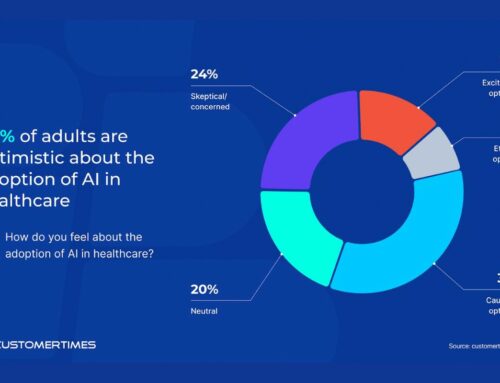By Reetha Menon, Practice Lead – Digital Transformation, HGS Healthcare and Abhishek Danturti Sharma, Lead Innovation – Digital, HGS Healthcare |

The digital age has shed new light on the need for interoperability for healthcare, as backed by recent imperatives such as the Centers for Medicare & Medicaid Services (CMS) Fast Healthcare Interoperability Resources (FHIR) or the Provider Gold Card standards. These regulations can drive quicker adoption and usher in new approaches for today’s healthcare organizations. Both payers and providers are now turning to these disrupters to check table stakes efficiencies off the list: from proactively improving accuracy and turnaround time of claims data to tracking member and patient interactions to build intelligence for future impact. But in the line-up of technology superpowers, back-office technology is an often-unsung hero. As a goldmine of claims-related and member and provider data, back-office transformation is increasingly delivering significant cost savings using intelligent service and technology innovations, with an often less complex implementation. In the back-office—a fulcrum of claims-related and member and provider data—these accelerators are key:
1. Process Mining:
These tools rapidly understand workflow nuances and begin solution development very quickly and with minimal interruption to business processes. By translating the subjective model to an objective one, this mining is a measurable study in the process discovery itself. Process mining initiatives aim to collect insights and intelligence for reimagining the payer-provider operations and develop deeper insights from the process to measure the efficacy, efficiency, and continuous improvement to enable data driven decisions. Process mining can also be the bridge that enables transformational solutions to cut across payer-provider front-office and back-office areas by yielding opportunities to streamline processes to their most optimum form. The combination of a zero-day approach to consulting and process mining will quickly unlock value for payers and providers. This would be the first step in design of enhanced workflow, as part of discovery.
2. Intelligent Automation (IA):
As a combination of RPA (Robotic Process Automation) and AI (Artificial Intelligence), IA allows for automation of routine steps that are rule based and repetitive, accessing one or more steps or volume driven. Salient features of IA include:
- Non-invasive technology
- Technologically agnostic solution
- Seamless use of existing end-user interfaces and enterprise applications
- Ability to use software robots to log into systems, function with security controls, and restrict access rights
- Ability to analyze structured, semi-structured and unstructured data sources and convert into insights
IA can be effectively leveraged as a transformation lever across the entire claims lifecycle for payers and the revenue cycle journey for providers. An example of IA in action would be a large managed health care payer benefitting from 50% efficiency gains in addition to claim error reduction from intelligent automation bots being created to validate member, provider, billing and coding information as a part of the claims processing in the claims lifecycle.
3. Intelligent Content Processing (ICP):
ICP transforms unstructured and semi-structured information into usable data. Rather than leveraging a single technology as is the case with optical character recognition (OCR), ICP uses a suite of AI technologies including machine learning (ML), natural language processing (NLP), Computer Vision and deep learning to classify, categorize and extract relevant information, and validate the extracted data. This extracted content is formatted to enable downstream processes to utilize it as per the requirements. An embedded ML model, within ICP, can identify the type of document and extract content irrespective of the template of the document. Companies like HGS Healthcare have deployed ICP in delivery processes across healthcare payers and providers. Some common use-cases are in processing medical records for medical/utilization management, processing appeals and grievances, performing payment integrity audits and KFI activities.
4. Web context channel:
A web-based contact channel works much like a digital voice assistant except that the conversational AI here is comprised of via textual inputs delivered via a web / mobile / progressive application portal. A member or provider will interact with input forms or an NLP-based contextual chat to complete a questionnaire. As a mix of a deterministic and probabilistic model, interactions are sourced from the unified truth, or knowledge base, that has been continually learning and growing over time.
In addition to prior authorization, digital agents via voice and text can also address queries across member eligibility, explanation of benefits and claim status. There is also high applicability in the DME space, where supply chain-related queries pertaining to order status, inquiry, payments, and dispatch can be entirely digital-agent driven.
5. Intelligent Agent Guidance (IAG):
On top of automation and ICP, IAG gives the agent the logical next step—prescriptive analytics to save from an error in workflow to guide workflow and more quickly assist with turnaround work. For processes not a part of unattended RPA processing, intelligent guidance technology can be an excellent way to create a superior agent experience as they cooperate with bots. Intelligent Guidance technology as a layer over payer and provider applications, is an easy to follow, contextual, step-by-step process within existing provider and payer applications that will reduce agent stress levels and reduce training time while improving data processing quality. The guidance appears on screen in real time to guide the agent through each step of the process in question. High-level benefits of a strong digital adoption layer include a user and process-centric approach to enhance onboarding and training.
6. Analytics and Insights:
Good back-office strategy means generating actionable insights through data analytics to help improve the delivery of back-office services and payer-provider experience. Analytics is performed on various data sets to understand the trends and patterns relevant to payer and provider business. From operational metric analytics to agent quality analytics, from post facto to predictive analytics – an integrated approach to analytics helps generate immense value for the clients on ongoing basis. Typical use-cases across payer /provider journeys include population profiler for care management, smart audits of claims, over payments identification and financial recovery forecasting. MIS, reporting, and dashboards are also integral with design of key interfaces to provide near real-time reports to clients. Prior authorizations are a good example of a unified truth source where analytics can help with provider stratification or gold carding, to indicate providers aligned to efficient authorizations and process.
For healthcare payers and providers alike, a digital-first strategy leans on these back-office accelerators for:
- 10-20% savings via operational insights generated by predictive and business intelligence services offered across healthcare payer services
- 20-30% savings in intelligent document processing across payment integrity, appeals and grievances, and key for information
- 25-40% cost savings to key clients through intelligent automation and process reengineering.
Together, these disrupters seize many opportunities—as a center for payer-provider collaboration and an improved journey for members/patients.
About The Authors
 Reetha Menon heads HGS Healthcare’s intelligent automation and new-age digital solutions practice. Reetha is responsible for digital transformation centers of excellence (CoEs) for healthcare clients with a focus on end customer experience (CX) and cost optimization delivery strategy.
Reetha Menon heads HGS Healthcare’s intelligent automation and new-age digital solutions practice. Reetha is responsible for digital transformation centers of excellence (CoEs) for healthcare clients with a focus on end customer experience (CX) and cost optimization delivery strategy.
 Abhishek leads HGS Healthcare’s cognitive and AI initiatives in a consulting and solution delivery capacity. Abhishek is responsible for and executes the digital product and innovation agenda across the healthcare organization.
Abhishek leads HGS Healthcare’s cognitive and AI initiatives in a consulting and solution delivery capacity. Abhishek is responsible for and executes the digital product and innovation agenda across the healthcare organization.












